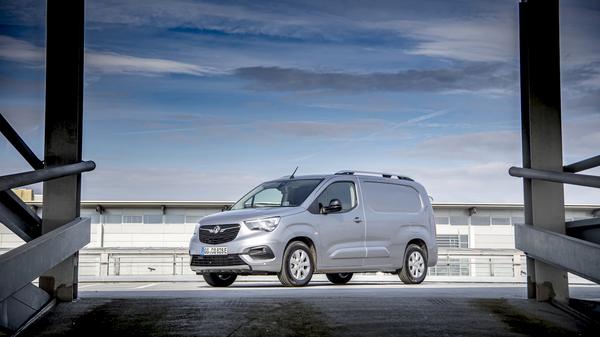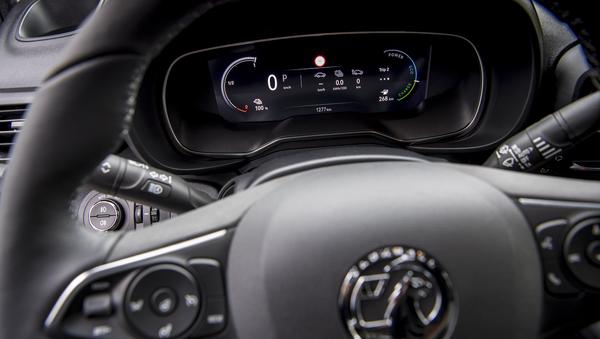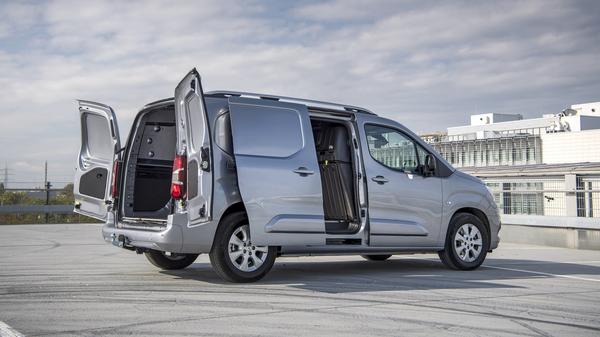Expert Review
Vauxhall Combo-e Panel Van (2021 - ) review
Vauxhall’s small electric van has a good range, impressive payloads and will fit seamlessly into many a business’s daily routine.


Words by: Tom Webster
Published on 23 December 2021 | 0 min read
The Autotrader expert verdict:
4.2
The Vauxhall Combo-e is entering into the realms of being a small van that happens to be electric rather than an electric van, such are the small nature of its compromises. It combines a useable range, payloads that are the equal of many a diesel van and a swift charging time that means it can be pressed into regular action. It’s still more expensive than a diesel but the gap is narrowing and it will pay back the difference quickly.
Reasons to buy:
- Excellent to drive
- Quick to charge
- Good choice of trims and body sizes
Cargo & practicality
The Combo-e is, in many ways, exactly the same as the diesel models. You can pick from the same two different lengths and because the batteries are located underneath the loading bay there is no change to the amount of space on offer. This means a useable area that is 3.3 cubic metres in the shorter one and up to 4.4 cubic meters in the longer model. The longer gets so much more because of a handy load-through hatch with a folding front seat.
The area in the back is evenly shaped with room for two Euro pallets in the larger of the two, but it also has an impressive payload of 751kg in the longer model and 803kg in the shorter. This is a couple of hundred kg short of the diesel model, but to put this in context the Combo manages to carry an impressive 1,000kg in some diesel versions and the electric model is right up with the best that its EV contemporaries can manage.
There are some handy tricks to help make the most of this, too, with an optional overload sensor that tells you when you are close to maxing out the payload.
Expert rating: 5/5

Interior
The cabin in the Combo-e is relatively unspectacular, giving off much more of a working vibe than that of a futuristic electric vehicle. The only nod to the EV nature is on the instrument cluster in front of the steering wheel. This is digital rather than analogue, and it contains information related to the battery and energy usage. This includes details on the impact of the different driving modes and the heating on the remaining range. It also plays host to the directions from the satellite navigation, if fitted.
The number of seats you get depends on which version you go for. The lower trim gets a single passenger seat, while the higher model gets a dual bench seat. The middle seat is narrower than the other two but it is still big enough for an adult, although the dashboard impinges on the legroom so it is best seen as an occasional seat for shorter trips.
There are loads of little storage spots around the cabin, with an overhead shelf, a dashtop glovebox, a narrow shelf for smartphones and the like and decent sized door bins.
The materials are solid and utilitarian rather than luxurious, and they should hold up well when subjected to a hard life.
Expert rating: 4/5
Running costs
Even factoring in volatile energy costs, electric vehicles should prove cheaper to run than their diesel equivalents on a per-mile basis, especially if you steer clear of public charging points and stick to plugging in at home or work.
This is only part of the story, though, as EVs enjoy much lower company tax bills, road tax bills and are able to enter into city centre zones for free where their petrol and diesel counterparts have to pay.
While there is a premium to pay for the e-Combo over the diesel models, there is increasing and strong demand for electric commercial vehicles on the used market so values are holding up well.
The service intervals are widely spaced and owners need only take their van in every two years or 25,000 miles, depending on which comes first. The exception to this is the first service, which needs to be carried out after the first year or 12,500 miles.
Expert rating: 5/5
Reliability
The latest version of the Combo has only been on sale for a relatively short period of time so there isn’t a vast amount of information on its relatability. However, the parts underneath are all tried and tested and shared with many other vehicles such as the Citroen Berlingo, Peugeot Partner and Toyota Proace City.
Electric vehicles also have fewer moving parts, which means that there should be less to go wrong and less that needs replacing at servicing time. The warranty on the main vehicle is only average by the class as it offers three years and 60,000-miles coverage. The battery, however, gets an eight-year, 100-000-mile warranty.
Expert rating: 5/5
Performance
The e-Combo enjoys lots of the benefits normally associated with an electric vehicle, with instantaneous acceleration and smooth driving mannerisms that sit alongside a quiet on-the-move experience.
There is just the one motor available in the e-Combo – at 100kW it has the equivalent of 136hp, which is more than the most powerful diesel engine in the Vauxhall’s range. It is limited to 81mph, partly to help save battery, and has an official 0-62mph time of 11.7 seconds. This doesn’t sound that quick, but it does its best work at the low speeds immediately off the line, where it is nippy if you need it to be.
There are three driving modes, which change the amount of power and performance you have available to you, and therefore how much battery you use and how much range is on offer. They are Power, Normal and Eco, with the first of these the only one that allows you to use all of the motor’s power. Normal dials it back to 80% and reduces the throttle performance while Eco goes even further and takes things back to 60%.
You start off in Normal when you turn it on and this is the mode that is best used the vast majority of the time. It is quick and strong enough that you are unlikely to need Power unless you have a particularly heavy payload or need to pull off an overtake, while Eco is the one to give you a few more miles if you know your range is going to be cutting fine.
Recharging the e-Combo is a relatively swift process, as every version is fitted with rapid charging ability as standard. This means that you can get from 0-80% in just 30 minutes on a 100kWh charger. The standard 7.4kWh on-board charger allows you to recharge to full in 7h 30 minutes on a wallbox, while you can upgrade to an 11kWh version that brings this down to 5h.
Expert rating: 5/5

Ride and handling
The e-Combo drives much like a regular Combo, which means to say that it is settled and predictable with a comfortable ride. The low-down location of the batteries improves things marginally, too, but it doesn’t change the overall characteristics of the vehicle.
The steering is light and responsive which is great around town but less welcome at higher speeds on the motorway. This merely serves to further underline the urban nature of the e-Combo.
Expert rating: 5/5
Safety
Even though the e-Combo is the most expensive model in the range it doesn’t get anything more than the rest of the range in the way of safety equipment.
As is the case with many panel vans you only get a driver’s airbag as standard while this is joined by the Vauxhall Connect system, which alerts the emergency and breakdown services in the case of an incident.
Unlike some high-spec models of the petrol and diesel versions, you don’t get the Safety Pack included and have to pay extra for it. This includes a front camera system, lane departure warning and lane keep assist, speed sign recognition, driver drowsiness alert and forward collision warning, emergency braking with pedestrian detection.
This means that autonomous emergency braking doesn’t come as standard at all, which is a shame.
Expert rating: 4/5
Equipment
The e-Combo is only offered with a choice of two trims – Dynamic and Sportive
Dynamic trim comes with a DAB digital radio, Bluetooth, a full-height steel bulkhead, rear parking sensors an alarm and a 7.4kW on-board charger and cable.
Sportive trim adds body-colour bumpers and door mirrors, metallic paint an eight-inch colour touchscreen with Apple CarPlay and Android Auto, the FlexCargo loading system with load-through bulkhead, fold-flat centre backrest and a dual front passenger seat.
There are several options that you can add, most of them the same as you can add to a diesel version, but there is one notable one that is bespoke to the EV – the upgraded on-board charger. This takes it up from a 7.4kW unit to an 11kW version, which brings the charging time potential down to 5h from 7h 30m. It’s only a few hundred pounds so could pay for itself in saved downtime if the van is due to be used on a quick turnaround.
Expert rating: 4/5

Why buy?
The Vauxhall Combo is an excellent van already and this version widens its potential rather than appealing to a limited number of prospective buyers.
Its range isn’t going to be enough for everyone, but that’s where the diesel steps in. For those that spend the majority of their time around town then it is a fantastic option.
Expert rating: 5/5